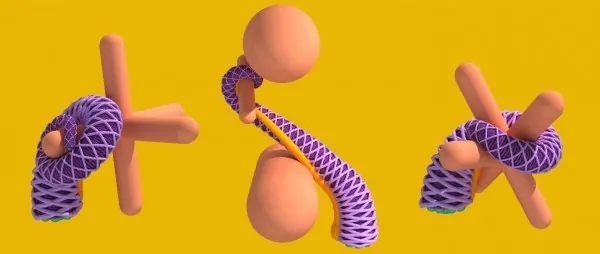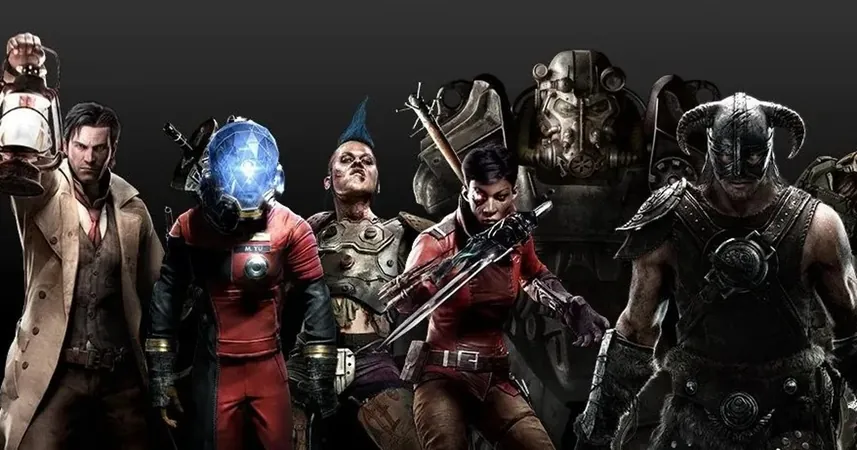
Revolutionary Leap in Octopus Arm Research: What it Means for Robotics!
2024-11-12
Author: Nur
Introduction
In a groundbreaking study, researchers have reached new heights in understanding the intricate mechanics of octopus arms, offering promising implications for robotics and biomimicry. By collaborating across various disciplines, the team devised a theoretical framework to meticulously control a simplified model that reflects the complexity of an octopus's arm, which possesses nearly 200 interwoven muscle groups.
Methodology
To bring their vision to life, they utilized advanced imaging techniques, such as MRI, combined with detailed histological and biomechanical data. This enabled the creation of a realistic simulation of the arm's movement. In an innovative experiment, a live octopus was observed navigating a challenging task: it was placed beside a Plexiglas barrier with a hole that allowed only one arm to reach through. An enticing object was strategically positioned on the other side to encourage the octopus to stretch its arm and manipulate the target, while researchers captured the entire process on video.
Experiments and Findings
"It was almost like working with a little kid," recalled researcher Gazzola, highlighting the playful yet intricate nature of interacting with the intelligent mollusk. "You have to know how to engage with them." By analyzing the recordings, the team extracted detailed motion data, demonstrating their techniques could authentically replicate the highly complex movements displayed by octopus arms.
Theoretical Framework
They applied concepts from topology and differential geometry to describe the arm's shape and control its movements via muscle activation. To simplify the management of the arm's motions, the researchers developed streamlined muscle activation templates capable of producing intricate 3D movements. Gazzola explained the process: “Instead of grappling with thousands of degrees of freedom, we correlated two topological concepts—writhe and twist—with muscle dynamics. The coactivation of distinct muscle groups produces a third topological factor, which encapsulates the changes in the arm’s morphology and motion.”
Implications for Robotics
The significance of this high-fidelity computational model extends beyond biology; it serves as a vital platform for roboticists to evaluate and refine their control algorithms. "This model presents a unique opportunity for us to explore new avenues in robotics," noted Mehta, another member of the research team.
Future Directions
The research reflects years of interdisciplinary collaboration, drawing on the efforts of various research groups and students. With ongoing changes in team dynamics, such as Tekinalp's upcoming graduation and postdoctoral position at the University of Maryland, the project continues to evolve. Looking ahead, the researchers plan to expand their simulation techniques to enable control of all eight arms of the octopus, aiming to mimic how these creatures adeptly handle multiple tasks simultaneously. They also set ambitious goals to translate their research into practical robotic prototypes that can undergo experimental testing.
Conclusion
"Our current understanding is still in a preliminary stage," Gazzola acknowledged, hinting at the exciting future of this research. "The next step is to create an automated system that allows our octopus model to learn and execute tasks independently." As scientists delve deeper into the mechanics of octopus arms, the fusion of biology and technology promises to unlock new realms of innovation, potentially transforming fields ranging from robotics to artificial intelligence. Stay tuned as this fascinating research unfolds!




 Brasil (PT)
Brasil (PT)
 Canada (EN)
Canada (EN)
 Chile (ES)
Chile (ES)
 España (ES)
España (ES)
 France (FR)
France (FR)
 Hong Kong (EN)
Hong Kong (EN)
 Italia (IT)
Italia (IT)
 日本 (JA)
日本 (JA)
 Magyarország (HU)
Magyarország (HU)
 Norge (NO)
Norge (NO)
 Polska (PL)
Polska (PL)
 Schweiz (DE)
Schweiz (DE)
 Singapore (EN)
Singapore (EN)
 Sverige (SV)
Sverige (SV)
 Suomi (FI)
Suomi (FI)
 Türkiye (TR)
Türkiye (TR)